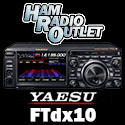Narrowband version of ROS still not legal below 222MHz without FCC approval
Discussion in 'Amateur Radio News' started by K7MHI, Mar 5, 2010.
- Thread Status:
- Not open for further replies.
Page 10 of 10
Page 10 of 10
- Thread Status:
- Not open for further replies.










